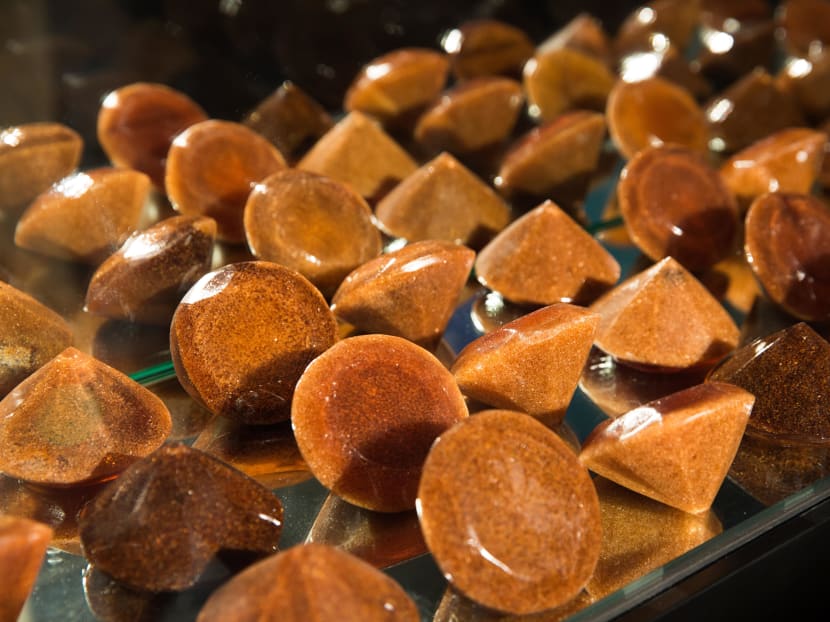S’pore Biennale: Nikki Luna’s Tiempos Muertos
SINGAPORE — At first glance, the dazzling diamond-like pieces inside the polished glass cases are reminiscent of gemstones displayed within the opulence of a luxury jewellery store. But unlike the radiance you would expect in a space for shopping, the low, hard lights that shine on these delicate things accentuate their luminosity while at the same time imposing an oppressive kind of darkness as visitors carefully make their way around this installation at the Singapore Art Museum.
SINGAPORE — At first glance, the dazzling diamond-like pieces inside the polished glass cases are reminiscent of gemstones displayed within the opulence of a luxury jewellery store. But unlike the radiance you would expect in a space for shopping, the low, hard lights that shine on these delicate things accentuate their luminosity while at the same time imposing an oppressive kind of darkness as visitors carefully make their way around this installation at the Singapore Art Museum.
Filipino artist Nikki Luna’s Tiempos Muertos (which translates to “Dead Season” in Spanish) talks about one of the legacies of the country’s Spanish colonial past. The objects are shaped from unrefined cane sugar from the city of Bacolod, which has been nicknamed “Sugar City” for its long-standing history as producer of sugar. And these “diamonds” does more than paint a glitzy picture of sugar as a trade commodity that has spurred many plantation owners to amass wealth.
Confined within glass cases and immaculately lined up to recall plots of sugarcane, these “diamonds” signify the plantation workers’ arduous labour. In their multitude, they amplify the workers’ invisibility — these poorly-paid manual labourers earn as little as a dollar a day. And due to the limited seasonal nature of their job means they are devoid of work between the “dead season” of June to September.
By placing the Philippines’ disintegrating sugar industry into the spotlight, Luna plays on the dichotomy of this sweet substance — it’s a tantalising flavour enhancer for many cultures around the world but it’s also a symbol of social stratification in her own country.
A discerning social critic, she adeptly articulates her concerns for the human rights of a class ensnared in the cycle of poverty, utilising the very fruit of labour yielded by her subjects.
Through Tiempos Muertos, Luna draws the faceless workers into the forefront of a museum setting, while inviting visitors to examine the sinister roots of a commodity we indiscriminately and unhesitatingly consume on a daily basis.
The simulated setting of a retail outlet offers an unforgettable “shopping” experience. GRACE CHEW, 25, NTU
The Singapore Biennale runs until Feb 16, 2014. For more details, visit http://www.singaporebiennale.org For more updates on the Young Art Writers Programme, visit #artlanders (http://tdy.sg/artlanders) or For Art’s Sake (http://tdy.sg/artssakeblog)
This article was written under the Singapore Biennale 2013’s Young Art Writers Programme in collaboration with TODAY.







